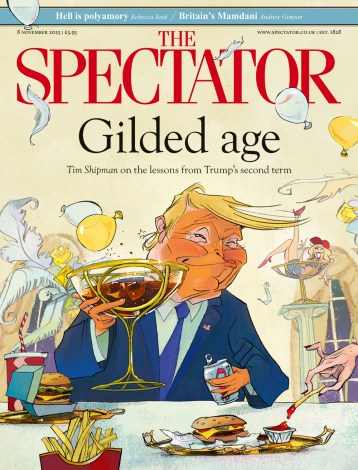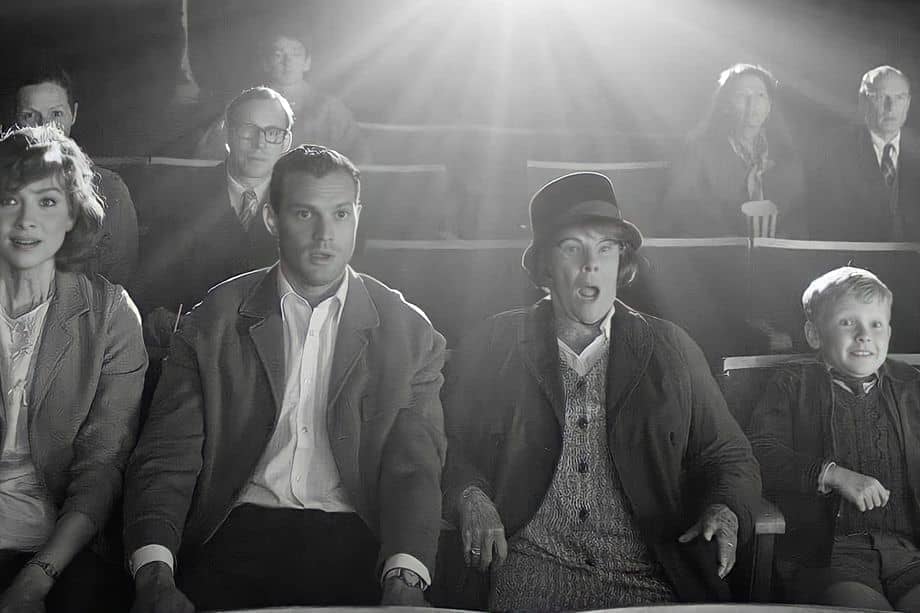Are black and white films making a comeback – or did they ever really go away? With Belfast, The Tragedy of Macbeth, Passing, Mank and Roma all generating critical buzz, they are certainly having a moment.
Even after the advent of colour motion pictures, black and white movies continued to be made, chiefly for economic (lower cost stock) and aesthetic reasons. Some present-day directors have even released monochrome versions of their colour movies, including The Mist (Frank Darabont, 2008) Logan: Noir (James Mangold, 2017) and Guillermo del Toro’s remake of 1947’s Nightmare Alley (2021).
Why is the Black and White format growing in popularity? For a few directors, it can be a pretentious device, a shorthand way to signify artistic importance, without the heavy lifting of producing something of real value. These arthouse affectations have earned justified mockery over the years, notably in The Simpsons, where town drunk Barney Gumble wins the Springfield Film Festival with this touching Black and White movie about alcoholism, titled ‘Pukahontas’ (A Star is Burns, 1995). Which actually wasn’t half bad.
Steven Soderbergh’s Kafka (1991) could also fall into the category of arthouse pseudery but watching the movie you may suspect that the director is really skewering the pretensions of certain contemporaries. Soderbergh went on to make another, more conventional Black and White picture, 2006’s The Good German.
But in the right directorial hands, the format gives a film atmosphere, tone and depth that is occasionally missing in colour pictures. Powell/Pressburger’s A Matter of Life & Death (1946) used black and white cinematography to differentiate scenes set in Heaven (monochrome) and on Earth (vibrant colour), which is of course counterintuitive – viewers may have expected the world of the living to be a dull black and white compared to the presumably multi-coloured glories of the celestial afterlife.
The luminous black and white work of cinematographer James Wong Howe (noted for his use of deep focus, wide-angle lens, low key lighting) in pictures such as The Sweet Smell of Success, Hud and Seconds remains a film school staple. The same can be said for frequent Ingmar Bergman collaborator the great Sven Nykvist (The Virgin Spring, The Unbearable Lightness of Being) who proved equally adept shooting in either colour or black and white.
Kenneth Branagh has to date filmed three movies in black and white, including his latest, the autobiographical Belfast (the others being In the Bleak Midwinter and Dead Again).
On his decision to shoot the vast majority of Belfast (2022) in black and white, the director explained: ‘Black-and-white feels very forensic to me, it feels like you can really get inside people, you’re not distracted by colour. We wanted to feel these people, we wanted to not just describe them. Belfast is a city under the northern skies — it often rains, the monochrome is the tonal range I associate with it in a way, peppered by brilliant bursts of colour.’
Critics have mentioned similarities between Belfast and Alfonso Cuarón’s Best Foreign Language award winning Roma (2019), a semi-autobiographical story of a family living in Mexico City’s Colonia Roma neighbourhood, also filmed in black and white. Both films major heavily on a sense of place and its impact on childhood – in each case, a black and white palate helps to translate a personal sense of nostalgia into a collective one.
Woody Allen is another director who has made extensive use of the technique, including in 1998’s Celebrity, which starred Branagh and was shot by Nykvist, a movie that proved a disappointment, despite the talent arrayed. Other, far better monochrome Allen pictures include Manhattan (1979), Stardust Memories (1980), Zelig (1983) and Broadway Danny Rose (1984).
For your viewing pleasure, here are a selection of the best black and white movies produced after colour became the mainstay of cinema releases:
Passing (2021) – Netflix
Rebecca Hall’s critically acclaimed directorial debut had a solid thematic reason for her choice to film in black and white. Based on Nella Larsen’s (herself of mixed race) 1929 novel, the picture’s title refers to those African Americans whose light skin colour enabled them to be identified as white, known as ‘passing’. A tragic sequence of events ensues after light-skinned Irene Redfield (Tessa Thompson), meets by chance childhood friend Clare Bellew (Ruth Negga), ‘passing’ as white and married to wealthy white racist John Bellew (Alexander Skarsgård), who is unaware of his wife’s background.
There is a personal aspect to the film, as Rebecca Hall has recently discussed her own mixed-race heritage. Sadly, Hall’s mother, the opera singer Maria Ewing passed away in January.
Schindler’s List (1993) Netflix, Amazon Rent/Buy
With the exception of two sequences (the opening candle scene and the girl in the red coat) Steven Spielberg shot Schindler’s List entirely in black and white, intending to give the Holocaust drama the look of documentary footage of the era. When it was suggested that the director use a colour negative for future VHS/DVD releases of the film, he refused on the grounds that he did not want to unintentionally ‘beautify events’.
The Man Who Wasn’t There (2001)
The Coens returned to the noir world of their first picture Blood Simple (1984) with The Man Who Wasn’t There. 1949: reserved small town hairdresser Ed Crane (Billy Bob Thornton) is tempted by an offer to invest in an exciting new process called ‘Dry Cleaning’.
Crane’s decision to raise the cash by means of blackmail leads to a mounting spiral of homicide, suicide, accidental death, and murder trials. And a condemned cell encounter with a UFO.
The Artist (2011) Amazon Rent/Buy
Along with the Best Picture awards achieved by Driving Miss Daisy (1990) and Crash (2006), black and white mainly dialogue-free musical The Artist was a surprising Academy Award winner ten years ago. As La La Land also proved, Hollywood loves a little bit of self reflection and the story line of a silent movie actor trying to come to terms with the advent of sound struck a chord with the Academy. Sure, it’s cute and, as a feel-good movie, it is not striving for particular significance, but The Artist is too pleased with itself for me.
Star Jean Dujardin won the Best Actor award, but akin to Roberto Benigni (Best Actor for Life is Beautiful in 1999), his career in English language countries hasn’t taken off, despite his strong turn in Scorsese’s The Wolf of Wall Street (2013). I suspect Dujardin isn’t really that bothered, as he continues to enjoy immense popularity in French cinema.
Sin City (2005) Amazon Rent/Buy
Co-directed by Frank Miller from his graphic novel with Robert Rodriguez (Once Upon a Time in Mexico), Sin City is a visually striking pulp anthology, predominately in black and white, but with splashes of colour during key moments.
Unfortunately, the stylistic choices made by the director were easy to ape, with a host of inferior movies copying Sin City’s distinctive look.
These included Miller’s own The Spirit (2008) as well as Give ‘Em Hell, Malone (2009), The Big Bang (2010) and execrable Brit gangster thrillers Jack Says (2008) and Jack Said (2009).
Sin City and sequel A Dame to Kill For (2014) remain very watchable, boasting great casts and work from Bruce Willis and Mickey Rourke which remind the viewer that when engaged by the material they can still turn in decent performances.
Dr Strangelove (1964) Amazon Rent/Buy
Stanley Kubrick’s classic nuclear war satire was the last film he shot in black and white. His decision not to go the more commercial route of technicolour was a wise one, as evidenced in the deep shadows of Ken Adam’s War Room and stark arctic landscapes beneath the sole unrecalled US B-52 Stratofortress as it heads towards its target in the Soviet Union.
Cinematographer Gilbert Taylor’s work on the picture benefits Kubrick’s casting of Peter Sellers in multiple roles, as a colour movie could well have made the extensive use of make-up and wigs more obvious.
Taylor (Star Wars, Repulsion, A Hard Day’s Night) lensed another nuclear war movie a year later, the excellent Bedford Incident, which starred the late Sidney Poitier as a photojournalist on a US nuclear submarine who witnesses another inadvertent atomic Armageddon.
Ed Wood (1994) Disney+, Amazon Rent/Buy
Tim Burton’s love letter to famously inept film director Ed Wood (Plan 9 From Outer Space, Glen or Glenda?) gave us one of Johnny Depp’s better performances in the titular role, a shame then that he chose to riff on it when he essayed a very odd Willy Wonka for Burton again in Charlie & The Chocolate Factory (2005).
Stefan Czapsky’s black and white lensing is excellent, giving the picture weight it would have lacked if shot in colour.
Martin Landau rightfully won the Best Supporting Actor for his turn as the ageing, drug-addicted and virtually unemployable horror icon Bela Lugosi.
The Last Picture Show (1971) Amazon Rent/Buy
The late Peter Bogandovich’s elegiac black and white adaptation of Larry McMurtry’s 1950s-set coming-of-age novel is ripe for rediscovery.
Controversial at the time for Cybill Shepherd’s nude swimming scene (the director’s lover and muse of sorts for a time), the movie provides a moving portrait of the inhabitants of a declining oil town in northern Texas. The cast is uniformly excellent, with stand out performances from Timothy Bottoms, Ellen Burstyn, Jeff Bridges, Ben Johnson and the late Cloris Leachman.
Bogdanovich’s short purple patch included another black and white movie, the Great Depression comedy-drama Paper Moon (1973).
In 1990 the director released Texasville, a colour sequel to The Last Picture Show based on McMurtry’s 1987 follow-up.
Despite reuniting much of the original cast, reviews were mixed and box office receipts negligible – just $2.3m on an $18m budget.
The Lighthouse (2019) Netflix, Amazon Rent/Buy
On the strength of Robert Eggers’ (The Witch) period horror movie, the worst job in the world (to paraphrase Peter Cook) is that of a ‘wickie’ (lighthouse keeper).
Cut-off by a violent tempest, grizzled senior wickie Thomas Wake (Willem Dafoe) and temporary newbie Ephraim Winslow (Robert Pattinson) enter an unsettling world of mermaids, murder, flatulence (Dafoe, more a kind of intestinal yodelling), masturbation (Pattinson), intoxication and insanity.
Like The Witch, The Lighthouse is a slow burning exercise in foreboding, enriched by the stunning black and white photography of Jarin Blaschke. Eggers’ next movie is the Viking saga The Northman, released this April.
Young Frankenstein (1974)
Gene Wilder came up with the idea for Young Frankenstein and then co-wrote his original script with director Mel Brooks, creating an all-time comedy classic.
Wilder’s Dr Frederick Frankenstein (which he insists is pronounced ‘Fronkensteen’) returns to his ancestor’s Transylvanian estate and revives (sic) the Baron’s infamous work, aided by hunch-moving servant Igor (‘Eyegor,’ a very funny Marty Feldman) and lithesome helpmeet Inga (Teri).
Frankenstein successfully animates The Monster (Peter Boyle, also exceptionally good), who he attempts to mould into a ‘cultured, sophisticated man about town.’
YF pays affectionate tribute to the Universal monster movies of the 1930s, aided by superb B&W cinematography (Gerald Hirschfeld) and set design (Dale Hennesy).
Brooks has said that he regards Young Frankenstein as his best motion picture.
For new-found connoisseurs of monochrome movies, you may also want to check out the likes of Raging Bull (1980), The Elephant Man (1980), Frances Ha (2012), Control (2017), Pi and Pleasantville (both released in 1998).






Comments